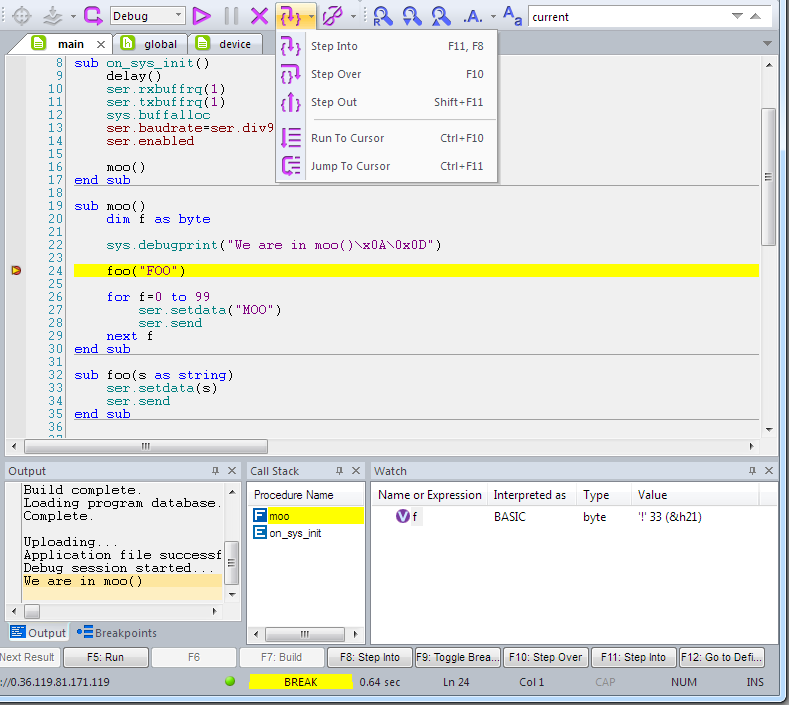Tibbo IDE (TIDE)

Applications for Tibbo programmable devices are developed within the Tibbo Integrated Development Environment, or Tibbo IDE (TIDE).
Here is how the typical Tibbo BASIC/C application development looks like:
- You write a Tibbo BASIC, Tibbo C, or a mixed Tibbo BASIC/C program.
- You select the target device (using Device Explorer, subject of the next topic).
- You set the debug compilation mode.
- TIDE then compiles your program into an executable debug binary file containing the p-code and uploads it to the target.
- TIDE then enables you to cross-debug your application while it's executing on the target. Everything — restarting, running, pausing, breaking — happens at the behest of TIDE.
- Once you are satisfied with how your application works, you set the release compilation mode, recompile your program and upload it to the target.
- At this point, as soon as your device is powered up it starts executing your application. TIDE is not involved.
More detailed information on using TIDE is available in a dedicated section of this documentation.
